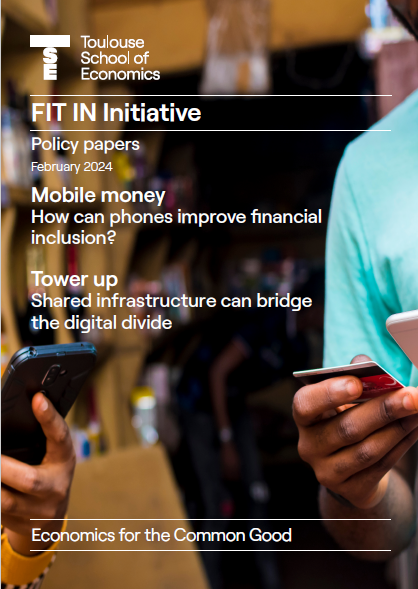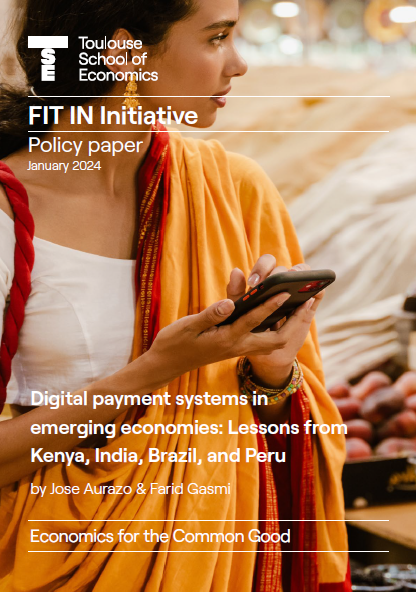Financial inclusion
In November 2020, TSE launched the FIT IN initiative to catalyze new research to constructively influence the design and regulation of interoperable digital financial services systems in low- and middle-income countries. As part of our quest to improve digital financial services, this page showcases some of the latest research contributions from the FIT IN initiative, based on research conducted through calls for papers, both internal and external.
# February, 2024
Mobile money: how can phones improve financial inclusion?
By L. Grzybowski, V. Lindlacher and O. Mothobi (Feb, 2024)
Researchers combine detailed survey and satellite data to study how mobile networks impact financial inclusion.
Key takeaways
- Individuals who live close to mobile towers and mobile money agents are more likely to adopt mobile phones. Uptake of smartphones would increase by up to 32% if everyone else lived less than 2 km from a tower
- People living in less developed areas are less likely to use mobile services. However, greater distance to financial facilities increases use of mobile money
- Mobile money enables transfers from richer to poorer areas and people, which reduces income inequality
- Imposing interoperability between agents would not have a large impact on competition in Tanzania, where interconnection has already had a positive impact on financial inclusion
Tower up: Shared infrastructure can bridge the digital divide
By G. V. Houngbonon, M. Ivaldi, E. Palikot and D. Strusani (Feb, 2024)
The resaerch team show how shared ownership of telecoms infrastructure can have important benefits for firms and consumers in developing countries.
Key takeaways
- Sharing telecom infrastructure can improve the availability, affordability, and uptake of mobile telephones and the Internet
- By divesting towers to neutral operators, mobile network operators can advance digital inclusion for women and rural households
- The main driver of these benefits appears to be increased service-based competition following the sharing of telecom towers
# January, 2024
Digital payment systems in emerging economies: Lessons from Kenya, India, Brazil, and Peru
By J. Aurazo and F. Gasmi (Jan, 2024)
This team address a question on digital payments using a descriptive approach to highlight lessons that can be learned from an in-depth examination of successful experiences in emerging economies.
Key takeaways
- Digital payment systems can be analyzed from three dimensions (the role played by private digital platforms developers and providers; by regulators and central banks, and the degree of the payment system interoperability)
- Although, to some extent, these varied experiences suggest that there is no one-size-fits-all solution, they highlight the necessity of active public-private sector cooperation and placing the end user at the center of such initiatives
- Future policy discussions should focus on three key challenges for any digital payment system (universal access in remote areas, price sustainability over time, and the value of data and its sharing and privacy policies)
Want to read more?
Save the Date
- FIT IN Initiative Conference on April 2-3, 2024, to explore the latest research findings of the FIT IN initiative.
News published in TSE Reflect March 2024 | Photo: Studio Tchiz, Adobe Stock





